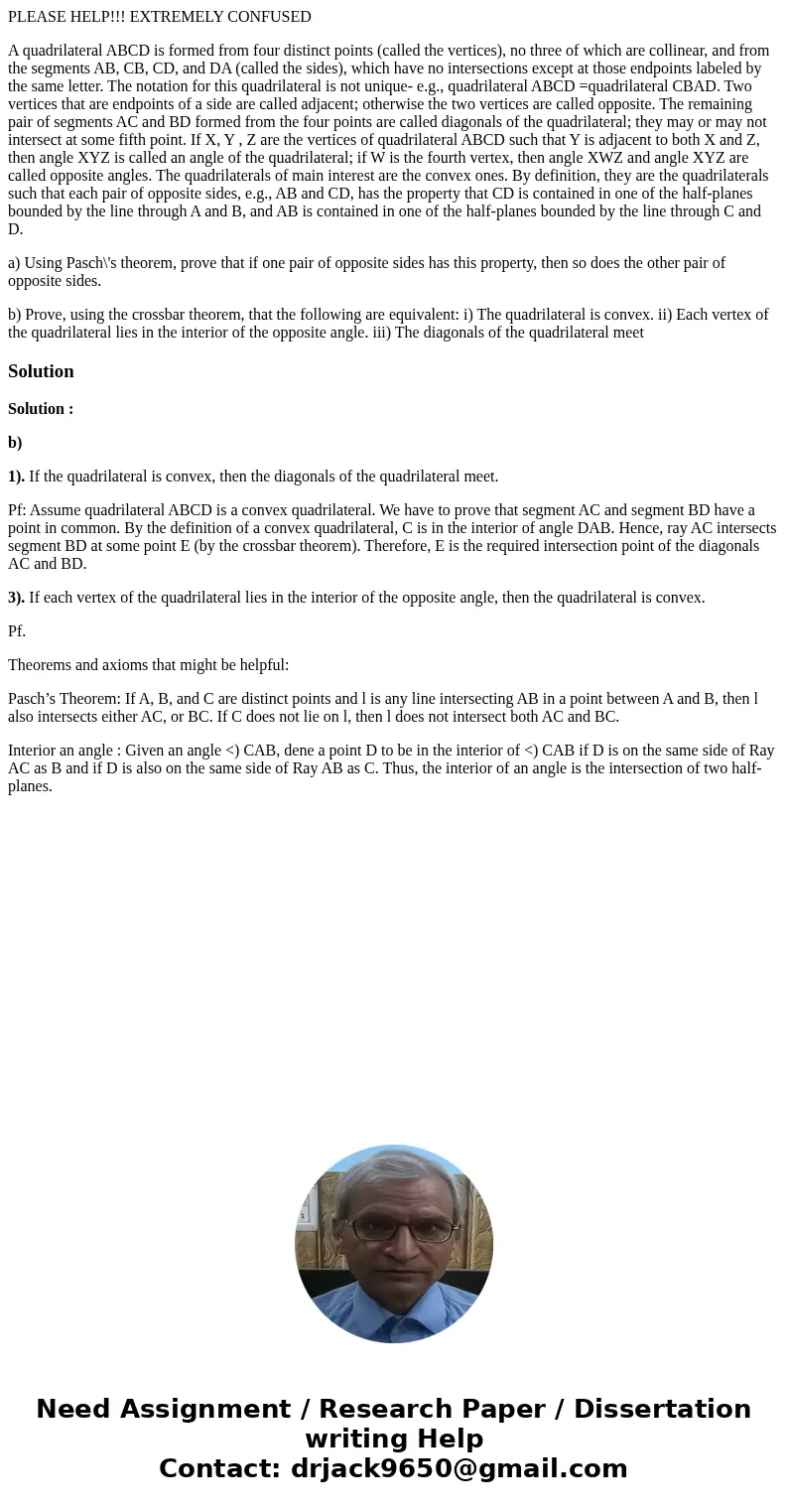PLEASE HELP EXTREMELY CONFUSED A quadrilateral ABCD is forme
PLEASE HELP!!! EXTREMELY CONFUSED
A quadrilateral ABCD is formed from four distinct points (called the vertices), no three of which are collinear, and from the segments AB, CB, CD, and DA (called the sides), which have no intersections except at those endpoints labeled by the same letter. The notation for this quadrilateral is not unique- e.g., quadrilateral ABCD =quadrilateral CBAD. Two vertices that are endpoints of a side are called adjacent; otherwise the two vertices are called opposite. The remaining pair of segments AC and BD formed from the four points are called diagonals of the quadrilateral; they may or may not intersect at some fifth point. If X, Y , Z are the vertices of quadrilateral ABCD such that Y is adjacent to both X and Z, then angle XYZ is called an angle of the quadrilateral; if W is the fourth vertex, then angle XWZ and angle XYZ are called opposite angles. The quadrilaterals of main interest are the convex ones. By definition, they are the quadrilaterals such that each pair of opposite sides, e.g., AB and CD, has the property that CD is contained in one of the half-planes bounded by the line through A and B, and AB is contained in one of the half-planes bounded by the line through C and D.
a) Using Pasch\'s theorem, prove that if one pair of opposite sides has this property, then so does the other pair of opposite sides.
b) Prove, using the crossbar theorem, that the following are equivalent: i) The quadrilateral is convex. ii) Each vertex of the quadrilateral lies in the interior of the opposite angle. iii) The diagonals of the quadrilateral meet
Solution
Solution :
b)
1). If the quadrilateral is convex, then the diagonals of the quadrilateral meet.
Pf: Assume quadrilateral ABCD is a convex quadrilateral. We have to prove that segment AC and segment BD have a point in common. By the definition of a convex quadrilateral, C is in the interior of angle DAB. Hence, ray AC intersects segment BD at some point E (by the crossbar theorem). Therefore, E is the required intersection point of the diagonals AC and BD.
3). If each vertex of the quadrilateral lies in the interior of the opposite angle, then the quadrilateral is convex.
Pf.
Theorems and axioms that might be helpful:
Pasch’s Theorem: If A, B, and C are distinct points and l is any line intersecting AB in a point between A and B, then l also intersects either AC, or BC. If C does not lie on l, then l does not intersect both AC and BC.
Interior an angle : Given an angle <) CAB, dene a point D to be in the interior of <) CAB if D is on the same side of Ray AC as B and if D is also on the same side of Ray AB as C. Thus, the interior of an angle is the intersection of two half-planes.

 Homework Sourse
Homework Sourse